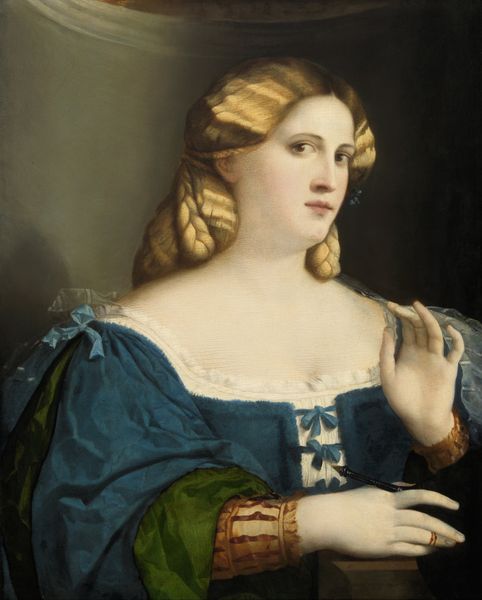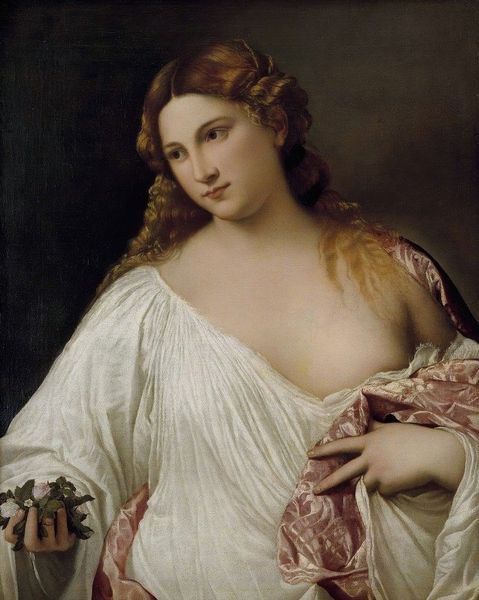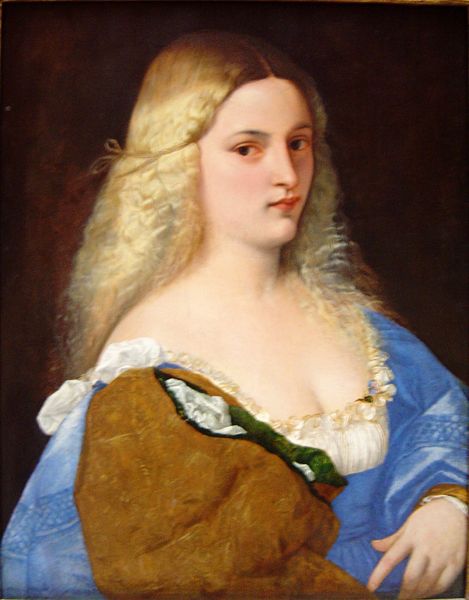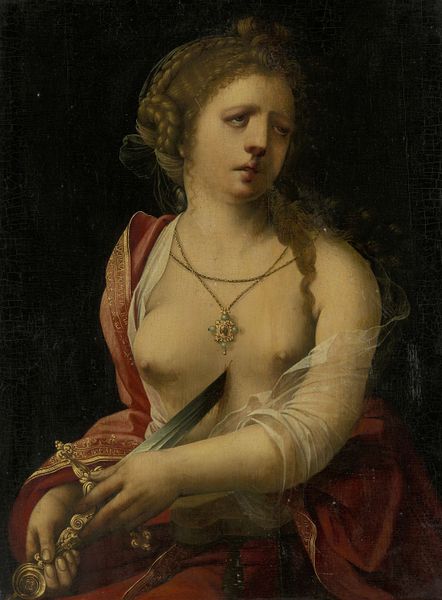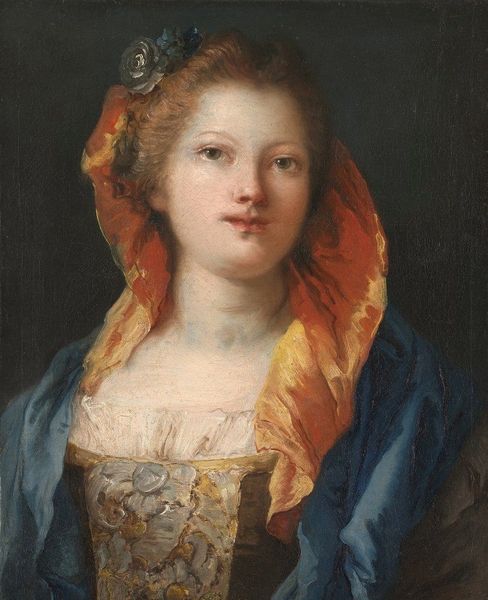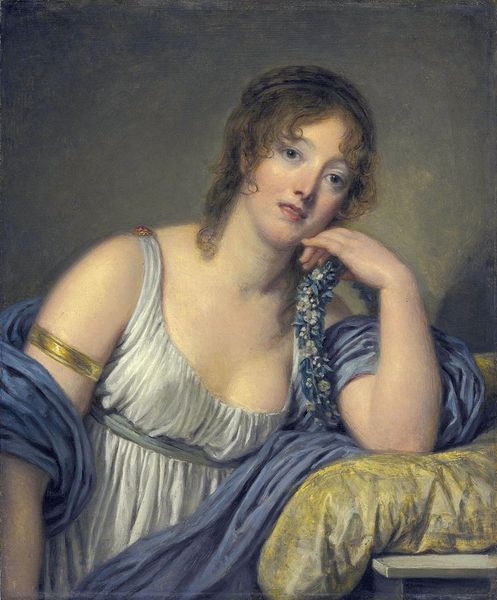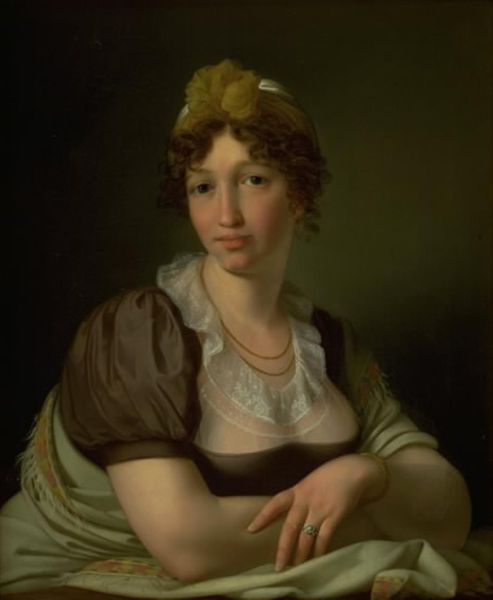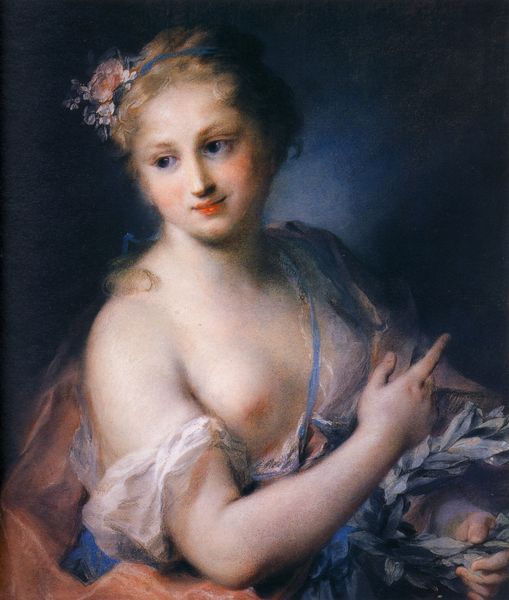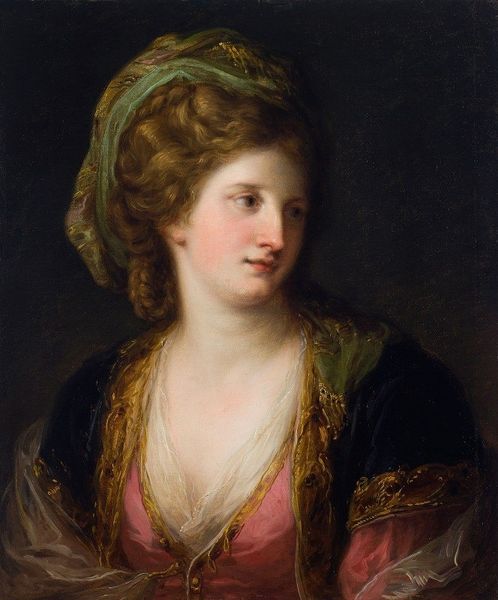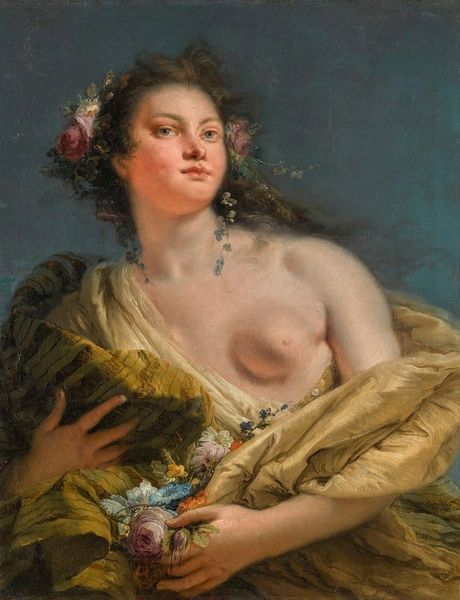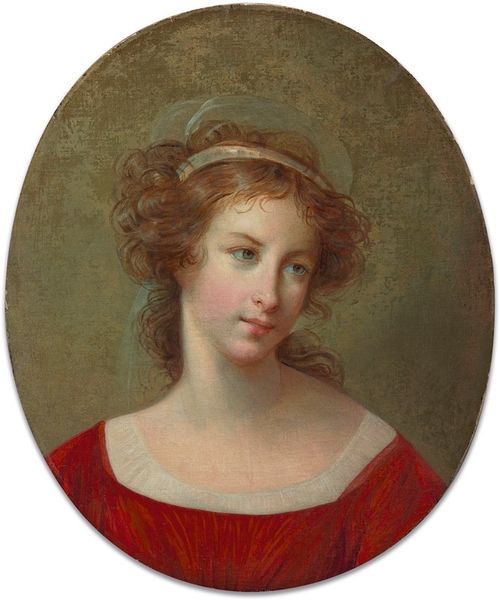
painting, oil-paint
#
portrait
#
painting
#
oil-paint
#
figuration
#
academic-art
#
italian-renaissance
#
nude
Dimensions: 78 x 64 cm
Copyright: Public domain
Curator: Looking at Palma Vecchio's "A Blonde Woman," painted around 1520 using oil on panel, I'm struck by how serene she appears. The softness of her skin and the gentle way she holds the flowers create such a delicate atmosphere. Editor: Indeed. But the composition…it almost seems unfinished. The dark background is a stark contrast to her luminous skin, making her presence somewhat disembodied. Is she meant to be Venus, perhaps? Curator: It's not explicitly Venus, but Palma Vecchio frequently portrayed idealized women during the Venetian Renaissance. He was extremely popular for portraying 'bella donna,' which were basically visions of female beauty that shaped and catered to cultural expectations. Consider the context; Venetian society valued fair skin and blonde hair and here they are prominently displayed. Editor: The flowers contribute to this idea of feminine virtue and fleeting beauty. She's offering us springtime, renewal. Perhaps she's intended as a classical muse, a reminder of a golden age. Those tiny blooms she holds seem to almost conceal the suggestion of undress too. Is she modesty itself? Curator: What is fascinating is how these images actively promoted very particular views of women, right down to their physical attributes. She is posed here at eye-level; it's hard not to meet her gaze, which puts her at the forefront of the canvas and directly into public dialogue at the time. And public opinion, of course, would have been guided by social conventions about female attributes. Editor: Agreed, the artist presents beauty in such a constructed way, and his style embodies so many traditional ideas about representation. I do admire her self-possession though. Her hand isn't hidden or self-conscious about undress. Curator: Seeing her positioned like this allows a great reflection on the visual languages prevalent in this period and their subsequent socio-cultural impacts on representation. Editor: And recognizing the visual conventions at play here offers some insight into art and symbolism that still resonate today.
Comments
No comments
Be the first to comment and join the conversation on the ultimate creative platform.
